Setting up the Slow-Pitch Jigging
Let’s talk about how you set up your slow pitch tackle.
Reel
Overhead reel, or conventional reel, is best for Slow Pitch Jigging. Shimano’s Ocea Jigger 2000NR-HG has always been the favorite for Slow Pitch Jiggers. But the reel doesn’t have to be a specific one. Any overhead reel would be sufficient if it holds 400m of line, and the maximum speed is 90cm+ retrieve length per crank. (About 75cm speed at the depth you are fishing.)
- The reel should hold at least 400 meters of line.
- The reel should retrieve at least 90 centimeters per crank.
Why overhead reel?
- Because the overhead provides more information to anglers. The spinning reel generates greater momentum in the reeling rotation. The momentum makes it easy to retrieve fast and strong, but on the other hand, the centrifugal rotation is too loud for anglers to pick up subtle information from the line. The overhead has the axis of the rotation perpendicular to the line, getting anglers linked more directly with the line.
- Because the overhead tells you right when you touch the bottom. One of the main reasons you get snagged is to let the jig sit on the bottom. At the moment the jig touches the ground, the hook is still hanging in the water. if you can get it up right away you are less likely to get snagged.
- Because you can control the drop-down. A lot of times you get bites when you touch the bottom. A lot of bottom fish is watching your jig falling from above. By thumbing on the overhead reel, you can control the speed and play some tricks on the drop-down, and you don’t miss those bites. This is a great advantage.
When you are set up right with the overhead, you can gather so much information from the line. You can feel the layers of currents, a fish chasing around your jig, your split-ring clicking, and you can tell if it’s sand or rock when the jig touches the bottom. You can’t hear those things with spinning reels. Gathering information is the heart of Slow-Pitch Jigging.
Rod
The pioneering Poseidon series by Ever Green is the most popular rod for slow-pitch jigging.
Sato Sensei, the slow pitch jigging creator, spent 2 years to develop this rod when he was creating SPJ.
The characteristics of Slow-Pitch Jigging rod are:
- High carbon crispy blanks with thin in diameter
- Slow tapered parabolic action
- Highly resilient blanks
- Guides and reel seat settings for maximum sensitivity
SPJ rods are supposed to easily bend deep with the whole length at jerking and reeling. Then when you hold it up, it springs back slowly and strongly, accelerating and releasing the jig to swim on its side.
These rods are designed so that even when you give a small pitch like 1/2 1/4 or 1/8 turn, only 20cm to 30cm in length, the rod responds to spring up nicely, slow and long.
The maximum sensitivity is also the main requirement. The rod picks up a lot of information from the line and delivers it to your hands. It also means that your little actions and different tones change the behavior of the jig.
SPJ is a game of “listening”. In hi-speed jigging you do a lot of “talking”, meaning that you focus on doing something to the jig. In slow pitch jigging, you should listen as much as you talk. You make less actions, and you are letting the jig make actions on its own while you are paying attention to the jig movements and the ocean conditions.
We don’t worry about the rod strength to fight with a big fish. It’s not the rod’s job. The rod’s job is to dance the jig, invite fish bites, and hook them. After you hook a fish, it’s the reel’s job with its power and the tight, smooth drag to bring the fish home. We don’t pump the rod. Keep your rod down and reel in steady and calm. Like Sato Sensei says, “Don’t piss off the fish.”
I will discuss the fish fight strategy in a separate article.
PE Line
PE line is essential for Slow-Pitch Jigging. Nylon monofilament or Fluorocarbons would not do. They are too thick in diameter and stretch too much.
The line is so important to deliver angler’s subtle actions to the jig, and also to deliver all the information back to the angler. Any PE line will do. Switching from monofilament or fluorocarbon, you’d be amazed how much communicative your jig can be.
The characteristics of PE line are;
- Very strong to the weight, so it can be so thin in diameter, cutting off influences of the currents.
- Doesn’t stretch, so you have direct control to what’s on the other end.
- Very week to friction.
- More expensive.
- Easy to lose or break off the fish because the line doesn’t stretch.
That is the general information. But each PE line is different as it’s braided differently, and coated differently. I will discuss the line in a separate article.
What size PE?
PE2.0 is the standard size for this game.
The size number is the Japanese measure, based on denir, the weight of the threads that are used to make the line for a certain length. Europe uses diameter. #2.0 is about 0.235mm. US uses poundage. But unlike mono and fluoro, where are basically one plastic line, PE line is braided. Diameter and poundage are all different, depending on how it’s braided and how tightly it’s braided. So Japanese use the amount of threads that are used to make the line.
PE1.5 is also popular.
Light line has its advantages. It catches less water influence. Staying vertical in a straight line is a key factor to get slow pitch going. If you have line slack in the water, it absorbs all your small actions. A thin, tightly braided, and coated PE line helps you have the direct control of the jig’s movement and the keen sensitivity.
The lighter line you use, the better contact rate you will get.
The heavier line you use, the better catch rate you will get.
Keep in mind that the length of the line between you and the fish has a lot to do with the strength. PE1.5 may seem too light if you have a 10kg fish 30 meters away. It probably is. But if you have a 10kg fish 80 meters away, it’s a different story. The same weight is dispersed throughout the length. 80 meters of line can hold a lot more weight than 30 meters of line.
Of course with some fish that go to the rock for cover, you need to stop the fish somehow, and you are temped to use heavier line. You can use as heavy as PE3.0. But you will sacrifice your contact rate. And I don’t recommend to go heavier than that. If you do, don’t think about slow pitch jigging and do hi-speed jigging.
Whether or not you use PE2.0 or PE3.0, if the tensioned PE line touches the bottom, that’s the end of the game. So I would still recommend PE2.0. If you are after a big fish that runs to the bottom, before you decide to switch to heavier PE line, consider to stay with PE2.0 and use longer, heavier leader. If you are fishing around 50 meters, sure, OK, you might as well use PE3.0.
If you are just beginning SPJ, I recommend to start with PE2.0. And if you can afford the second reel, load PE1.5. You can switch the reel with lighter line when the fish is slow or the condition is tough to stay vertical. This move can make a big difference in contact rate. You don’t learn anything if you don’t get contacts.
How much PE to load?
Sato Sensei and the slow pitch jigging experts say “Load 600m PE.” Because you never know what you hook. And you need to let out your line to catch big fish. Well, these guys sometimes catch sailfish on PE2.0! (With the support of the boat of course.)
Leader
It’s common to have 5 to 8 meters of leader of Fluorocarbon. The leader is knotted to a solid ring, which is connected to a split ring which holds the jig and another solid ring with assist hooks. We don’t use swivels. They create unnecessary water resistance. Like Sato Sensei says, “The less metal parts in your system, the more contacts you get.
The leader is there to prevent PE from touching the bottom edges, to keep strong knot to the ring, and to absorb shocks from the fish fight by stretching.
We’ll talk about the knots on another page.
What size leader?
We usually FC #10 (40lb), #12 (48lb), up to #16 (55lb). #20 (70lb) is rare, but if you mean to catch a big fish that runs to the bottom, it’s needed. I use #12 usually. #14 or #16 when you expect big ones. #10 when the fish is slow. Again, the thinner the line is, the more contacts you can get.
In this line system, and with my fight style, I’ve never had a line break at PE line. It’s usually the leader. When PE line breaks, what you should be suspicious first is that the line was damaged before that. So don’t worry too much about using a light PE line. You should be purposeful when you choose the leader, how heavy and how long, and always be tight and perfect at knots.
Jig
There are a growing number of specialized jigs for Slow-Pitch Jigging on the market. Never heard of a new jig which isn’t titled “for Slow-Pitch Jigging” for a while now.
They come in all shapes and colors but one thing in common is that they are center-balanced. And one side is flat and the other side is fat. The key factor of Slow-Pitch Jigging is to let the jig swim or fall on its own in a horizontal position. And the fat side is always on the bottom and the flat side in on top side.
There are roughly 3 categories they can be divided into.
Fall Jigs
They specialize in falling. They are usually “fat” in shape. They are designed to be used by Long-Fall Jerk. They do all kinds of performance and falling patterns so that the strategy is to give the jig as much time to fall as possible. They usually do not slide or swim at the pitch. Some of them go too wild on a lift up. So soft lift upward, and using the whole length of your rod, give a long fall. They do work in a lot of occasions. Very dependable in a deep water or in a strong current, in situations where Slow-Pitch Jigging doesn’t work well.
Responsive Jigs
These specialize in responding to subtle actions. They have pointy heads, and the tails come in different shapes because they are each designed to perform special movements in falling as well. They are great in Slow-Pitch Jerk, or combination with Long-Fall Jerk. They react well both to subtle actions and to energetic actions, and swim to slide and fall on its side.
Long Jigs
They specialize in sliding to the sides. They work well with High Pitch Jerk mainly. High Pitch is different from hi-speed jigging. High Pitch utilizes the strong impacts at the pitch and let the jig swim to the side. It’s still based on 1 pitch per second tempo basically. Some jigs generate such great forward momentum and brilliant hydrodynamics that they swim for so long and it can be 1 pitch for 2 or 3 seconds. Unlike hi-speed jigging, you give good intervals between pitches so that the jig swims on its own to the side.
Does the color make a difference?
I don’t know… But I think the colors make much more difference to us anglers than to the fish. When the new color comes out I just want to make a bait right away. And it feels like it catches more fish but maybe that’s because I use it more often than others.
Does fish see colors? Anglers can talk about it for hours. But we are not talking about the surface fishing. In most areas it’s pretty dark at 100m deep.
If we Humans hunt in the wild, we must use full potentials of our sensors. But vision is what we heavily rely on. That is how we evolved according to our environment and our strategies to survive in it. So the colors are pretty important for us.
How about fish? They have 2 eyes like us. But what’s very different is their hearing. Their ears are all along their body. This tells something, I think. They should see things. But probably they rely a lot more on their hearing.
Dolphins and whales used to be land mammals and evolved into the ocean. What they developed is the auditory sensor system called echo-location. Sounds travel much faster and further in water than in the air. That confirms me that the in-water environment is a world of sounds.
There is a pattern of the color which is very popular recently. It is luminous paint in a zebra pattern. Luminous paint is considered effective around 100m deep or deeper.
But I do catch with or without.
And I don’t get fish with or without.
These days I find myself more and more not worry about colors. But the zebra pattern makes sense in a way because a lot of juvenile fish has this pattern on their body. They must be familiar to the pattern.
Hope the information helps you! Good luck!
Related Posts
77 Comments
Leave a Reply to Sherief Emad Cancel reply
Categories
- 1. SPJ (57)
- 1-1. Principles (9)
- 1-2. Techniques (11)
- 1-3. Setup (17)
- 1-4. FAQ (19)
- 1-5. Tackles (3)
- 1-6. Video Gallery (2)
- 2. Other Offshore Games (5)
- 3. Fishing Report (105)
- 3-1. Totos (25)
- 3-2. Readers (72)
- 4. Fish Cooking (19)
- 4-1. Iki-Jime (3)
- 4-2. The Art of Sashimi (5)
- 4-3. Recipe (7)
- 4-4. Seasoning (3)
- 5. Fishing Charter (6)
- Fish (12)

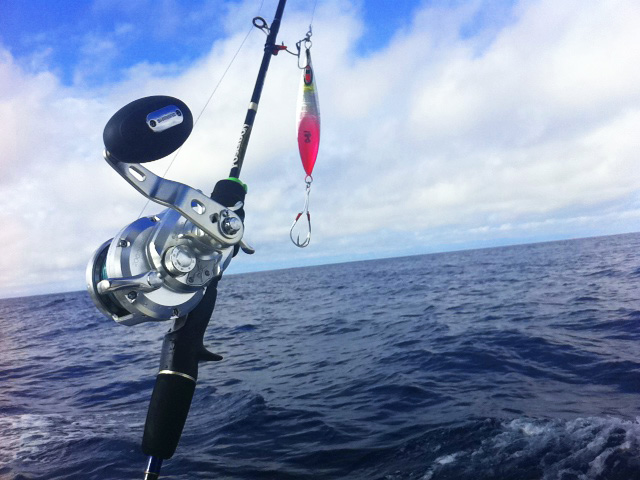
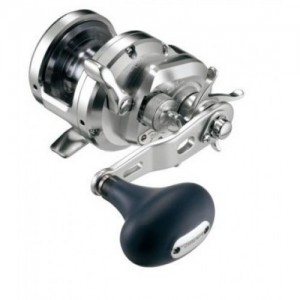
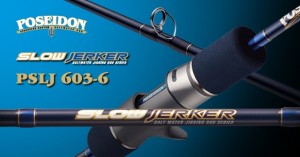
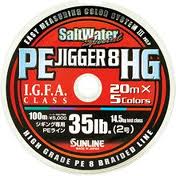
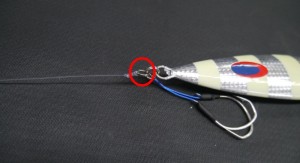
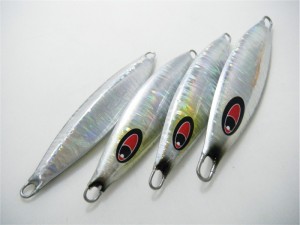
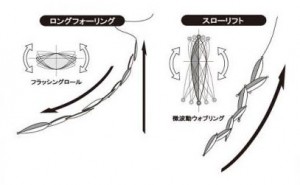
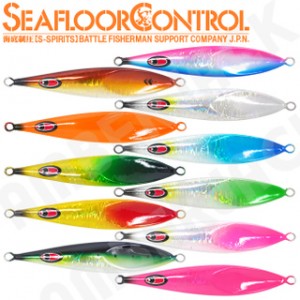
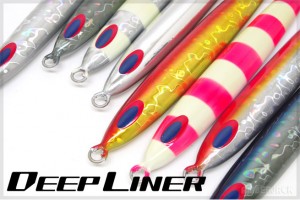
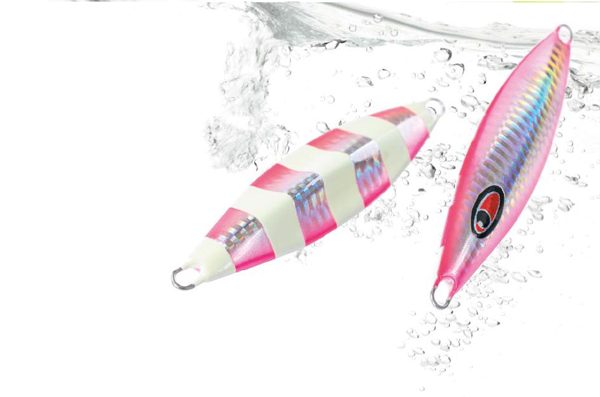

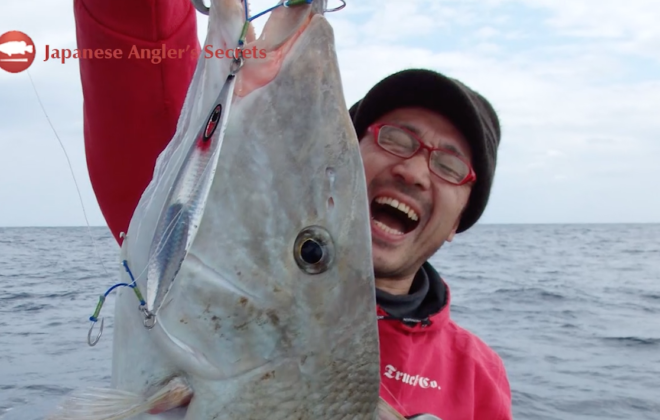
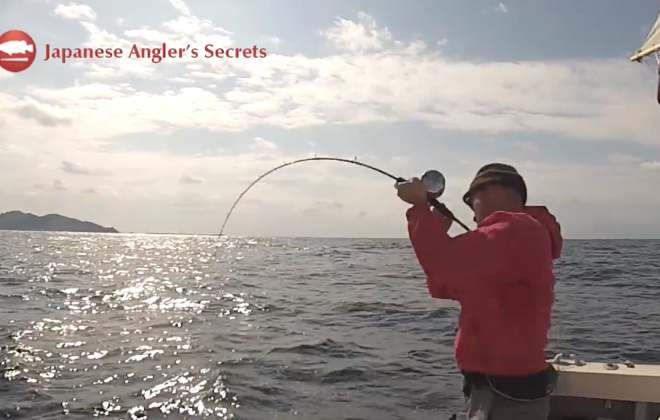
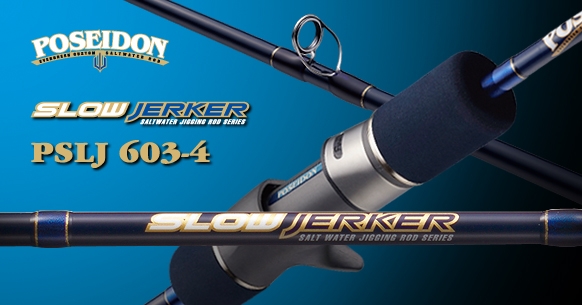
Your explanation of using conventional reels for slow picthjigging really strikes me. I’ve been jigging with both conventional and spinning reels, however, always feeling connected to the lure more with the conventional reel.
Hi Kitidas. Thank you for reading my articles. You’ve probably known why you use the conventional for your jigging. I do like jigging with the spinning when the fish hits like a counter strike. But I just like it better to play the game with the conventional, collecting information, estimating the situations, cooking up strategies and executing them, like you probably do.
Hi,
I agree with what you’ve been saying, totally. 🙂
This is one of the best jigging webs i have come across, and I think my jigging principles are very similar to yours. I had Norihiro Sato DVD for more than a year but never quite understand what he’s trying to demonstate. Since I’ve found this website, all of what I saw on Satosan DVD become clear. So thank you very much for creating such an excellent web!
Thank you very much for your compliment Kitadas. What a nice surprise to meet a classmate of Sato jigging. It’s my pleasure to help you understand the Japanese explanation. I’m just setting up this web site. Please come back and share your thoughts.
Greetings!!! First of all, thank you for all the excellent information and for flushing the recommended techniques. I’m working with slow jerker 603-3 I wanted to know if maxel hybrid 20 is good for this stick and slow fishing method and they are in this fishing method must work with anchor or floating anchor.
Hi Elico.
Thank you very much for supporting my website.
I don’t know Maxel reels because they are not available.
Whether or not it works depends on a lot of factors that I’m trying to explain on this site. I’m probably not being so effective at it to you. But please read it through, and you may come up with more specific questions.
Hello Totos,
Do you have any experience of the LD 2000 2 Jigger from shimano?
I’m not sure of what ratio the high gear is and I don’t see any use for 2 speed but how have you found the reel overall?
Hi Daz
I’m glad you asked about Shimano LD Jigger! It is my main reel in light jigging game as a matter of fact. I like it very much.
The lever drag system is so easy to change the drag to the desired strength in an instant during the fight. With a big fish, there are times that you want to loosen your drag especially near the surface. There are also times that you want to loosen the drag free in intention to prevent your tensioned line from touching the rock bottom. Lever Drag allows you to do that so easily.
See the fighting strategy at http://anglers-secrets.com/v2020/fish-fight-part-2-fighting-strategies-479.html
The high gear ratio is 6.2:1, the retrieve length per crank is 96cm. This is the speed mode in which you do your jigging normally.
The low gear ratio 4.1:1, the retrieve length per crank is 64cm. This is the power mode when you fight a big fish.
This is such a cool function. I just wish I could use the power mode more often!!!
The only problem is that the normal handle is too short, 70mm. It would be exhausting to lift your 200g jig for hours with this handle. If you consider this reel, you should consider to install the custom handle. There are several on the market and I think you can install the handle of LD4000 on 2000 also. 85mm would be sufficient enough.
Hi Totos,
Thats great information thanks.
I might look further into getting one.
Hi Totos,
I really like this web space – Thank you, your slow jerk information is fantastic.
Do you have any experience with the Tenryu Horizon SL HSL66B-MH? I have read a lot about your Posiedon Slow Jerker and wondering if you may have tested the Horizon and Posiedon side by side?
I am very interested in your thoughts.
I normally fish in 50-110m water and like to target Snapper (Pargus Auratus). We get many bigger fish as a side catch so these are the two rods I am looking at. What do you think?
I appreciate your assistance and look forward to hearing from you.
Cheers,
Dan
Hi Dan.
Thank you very much for visiting! Glad you like the contents on this site.
You have a nice eye to target that rod. Tenryu Horizon SL. Tenryu is not a big hit maker but has a long steady good reputations for their quality rods. Unfortunately, I’ve never seen it. But as far as I hear about it, I think it can be a good substitute for Slow Jerker.
Slow Jerker is definitely the best, no question. When you see its tip dance like it’s alive to the music you play, you will really fall in love. The rod reacts to your slightest movements. The sensitivity is excellent. And the spring back action is smooth and strong.
But! It’s expensive. And It’s hard to find. Normal retail price is around JPY47,000. Sometimes used ones are available around 36000 to 40000.
Tenryu is around JPY30,000 at the discount web shops. I heard that the spring back action is somewhat close to Slow Jerker quality. And I would agree with that when I see people catching fish at 130m deep with a 240g Deepliner FB, Spy, or Seafloor Control Rector on the rod. Those jigs work when given the spring back actions. BTW, Slow Jerker 603-6 can work with a 300g jig with no problem.
I’d say Tenryu would be a good entry model for slow pitch jigging. Let me know if you need my help on shopping from Japan.
Hello Totos,
Thank you for the informative and entertaining website. It is exciting to learn new, specialised fishing techniques.
I have been looking at some rod blanks in the Matagi catalogue: TR66LITEJIG-SLOW and TR67 Slow Jerk3.
Have you heard of these blanks? Are they suitable for slow jigging techniques?
Please feel free to let me know if you have any other suggestions for suitable rod blanks. We fish between 20-120m, east coast of Australia.
Thank you,
Youngie
Hi Youngie.
Thank you for visiting my site! I appreciate your interests.
Are you a rod builder? Wow, you know Matagi… It’s a custom made rod builder. I’ve never seen their jigging model. I didn’t even know they released a slow-pitch jigging model this year. So you are interested in building your own rod, I suppose?
The slow-pitch jigging is relatively new. It was just less than 2 years some makers started releasing rods for this particular game, but before that there was only Evergreen who developed this game over years with Sato Sensei.
The slow pitch jigging heavily relies on the rod performance for making actions and getting the fish hooked. It requires super elasticity in rods. Rolling up a high carbon steel sheet in a fine tuning to build the blank requires high tech and high skills. And it’s very costy. One of the developers at Matagi told me that. Back then he told me that Slow Jerker is really a special rod and they can’t just copy it.
Even though they released one model, I’m sure they are test-marketing it. If they are fully engaged, they should have at least 3 models of line-ups, like Evergreen has 2oz, 3, 4, and 6. It’s the nature of this game. You need different modes of rods to adjust to the situations. And if you are just starting this game, I’ll recommend to use a proven rod in this game before the custom made.
Evergreen is #1. The Retail is about JPY47,000. Beat has just released a good one, Propagate, around JPY40,000. These are the real high-carbon rods.
Yamaga Blanks Galahad is around JPY33,000. It’s not so popular yet, but I heard it’s pretty good.
Shimano is finally releasing a slow-pitch model. But they are not going for that high standard. They are making under JPY30,000, an economy model. But it’s shimano, the quality shouldn’t be bad. My friend angler and pro shop owner has seen the prototype and he says it’s OK and probably very at the bottom line.
These are all made in Japan. I’m not a believer but I can trust the quality.
Other products have “Slow” on the name, but… I don’t know. I’ve tried some of them, but they are weak in “spring back” action. They are not elastic enough. It does NOT mean the fish would bite on it. It does NOT mean they are bad. But when you once feel the lively actions of Slow Jerker, you’d go “Wow!”
If you’d like I can help you to get an used Slow Jerker, around JPY37,000.
Hello Totos,
I am not a rod builder but my fellow fisherman Tom at TBC Rods has produced some great mechanical jigging and popping rods using various components from Matagi and other sources. He suggested these blanks to me as he is interested in any developments in rod building and fishing techniques.
Recently I looked at Palms, Jig Zam models and other higher end Slow Jerk rods at a tackle store in Tokyo. Without Nihongo it was difficult to discuss the finer points of rod design with the staff. After watching Sato Sensei in action it is evident that the rod action is a critical element in Slow Jerk system.
Thank you for information regarding other models. I will investigate.
Tight Lines!
Hi Youngie.
OK, that figures. It is hard in any language to explain what it takes. But obviously you see a lot in DVD. You must be a very experienced angler! It’s a fun game mate! It’s fun not only because it’s productive but also because you have so many choices to make differences, how you set up, how you plan, how you execute.
Get one rod and wait for Matagi to line up.
Hi Totos,
Thanks again for for the Evergreen slow Jerker 603-6.
It arrived in 5 days shipping from Japan in mint condition.
Ocea jigger and jigs on the way, can’t wait to test on our fish.
Cheers
Daz.
It’s my pleasure Daz.
Soon you’ll be fully armed for slow-pitch jigging!
Looking forward to your catches!
Hi Totos,
My Evergreen 603-6 arrived yesterday, it’s a lovely piece of technology. Thank you for arranging the deal.
I tested it out today and am happy to say I landed a small Mahi Mahi (Coryphaena hippurus). To get this fish I was not slow jerking. We had fish under the boat so all I needed to do was drop down a couple of meters and I was on a hit.
My friend Youngie (he is on your site) was on my boat and he was the golden jerker king of the day. He caught four species mainly on medium pitch – Tuskfish, snapper, kingfish around 7kg, bonito. I had to work very hard for hits and I also dropped all my hits down deep.
On the water was quite a hard day because of many wind changes. In 60m best jig was Youngies 160g shimano butterfly. You are right about vertical Totos. When the jig falls sideways because it is too light for the drift, the whole contact changes.
I will send you a photo of Youngie and his tuskfish.
Thanks again
Dan
Hi Dan! Thank you for your report!
I’m very happy that the rod arrived safe and you’re already playing with it in the field.

Thank you for your picture of Tuskfish.
I see the fish made the bite on the rear hook. Apparently the fish hit on the fall. Maybe right at the bottom? We have similar species here, it should be delicious! Nice catch!
Please use extra caution with Slow-pitch Jerker. It’s super sensitive. It can easily break. You should never bring the rod upright. The accident happens especially when you land the fish. Never upright. I see that you’re an experienced angler, but I’d just like you to remember that.
As for the vertical jigging, I wrote up a FAQ post. Please check it out
Vertical Jigging
Hi ,
i have a kayak and would like to try the slow pitch jigging from my kayak. However i don’t want to spent to much money for the equipmenet . The amount i can afford is around 200/250 euros for Rod and Reel . Could you suggest any combo ? I will fish at 40m to mostly 100m .
Thanks a lot
Hi Andreas.
Thank you for dropping in.
Straight to the point, it’s actually very hard to set up slow pitch with your budget. It is possible. Try to get a rod with parabolic action with high resilient material and a reel with speed of more than 80cm retrieve per crank.
But honestly I cannot make these recommendations, because I would be frustrated if I were fishing with these cheap tackle. Cheap products can work in certain situations but it doesn’t when the situation gets a little tough or when I want to try different tactics.
Plus, the range of motion you can make with your rod is very limited on kayak. And you can’t utilize all the slow pitch tactics you would be able to do on a boat.
So, if I were you, I would not be so particular about slow pitch. Kayak jigging can be so fun and so creative. Still, there are a lot of things you can learn from these slow pitch principals. I would pick up bits and pieces of information from this game and be creative with my own style and tackles. These principals do not tell you what to do, but give you information on what choices you have.
Hi Totos,
I really appreciate your reply you helped me a lot to decide.
I prefer to use light tackle in order to feel the bottom and what is going on down there in the deep water. So i guess this technique is not for me yet i need to get a boat 1st and earn more money 🙂 However i was very pleased to talk you. Will keep an eye on your site in order to get any trick and deploy it while jigging with my kayak.
Thanks
Hi Andreas
Thank you very much for your comment.
If you have tried, I recommned Daiwa TG Bait. It’s proved to be highly effective around the reefs and also in the deep as well. Shake, shake, shake and fall. It’s very manageable from a kayak.
Totos
Hi there. I got a shimano nasci c3000hg reels. Can you suggest a good rod for slow pitch jerk to pair with it? I’m from Malaysia and we normally jigging in shallow water (30m-50m) using jigs weight around 40grams-100grams. Thanks man.
Hi Lockman.
Thank you very much for your interest in this game.
You have a spinning reel. I would not say you can’t do jigging with a spinning reel. But slow pitch jigging concludes that the overhead reel suits best. And if you learn the principals of this game, you can be creative and adapt to different styles. But if you really want to learn, I recommend to get a overhead reel with a slow pitch rod.
Totos,
Thanks for sharing your knowledge? I found it to be extremely elightening. I’m thinking of buying the Major Craft Giant Killing Slow Pitch rod pairing it with a Ryoga bay jigger for slow pitch jigging. May i know your views on this combination? I’m fishing mostly in Malaysia and Indonesian. Would appreciate any inputs. Thank you
What is the depth of your field?
If it’s shallow, like under 50m, Giant Killing will probably work fine. But otherwise, I don’t recommend it. Can you find Shimano Game Type Slow J? That is the cheapest I can recommend.
Hello Totoo, I’ve been fishing for almost 2 decades already but I must say I’ve never learned so much just by reading 1 post. I would say that the God father of SJ here in the Philippines would be the owner of Hook Pro Outdoor fishing Tackle. A very nice and helpful fellow who never hesitates to give really valuable tips. Much like you and your posts, very unselfish to newbies like me to the game of SJ. Oh and thank you also to the rest who’ve added and posted here… Tight lines and keep it comin… ☺
Dear Sir, I’m planning on getting the Evergreen Poesideon 603-4 rod because the area in which I fish has rather strong current. At times, we use up to 250g jigs just to keep the line straight down.
I’m having problem deciding which reel to match it with. Should I be using the Shimano Ocea 1501hg or the 2001Nrhg?
The depth around this area is an average of 30m. At times, it reached 40m max.
Hope to hear from you soon. By the way, I’m new to slow jigging. And thank you for your article. Really informative.
Hi Alvin.
250g jig at 40m depth? That’s pretty tough situation.
OJ2000NR-HG.
It’s got enough torque to play with a heavy jig with ease. It retrieves more line in one crank, making it easy for you to take out the line slack in each pitch.
Good luck!
I am also using heavy gigs up to 250g in 40 meter.
find it to be very effective in any current situation when targeting bigger size fish.
just watch how much line you give on the drop when playing over foul grounds.
Hafa Adai Totos,
I have the Ocea Jigger 2000HG, and also have 300M of EX8 Pe2. Im trying to find the right mono to fill up the spool from the base before PR knotting it to the EX8. Which brand / diameter thickness do you recommend? You mentioned #16 mono, so that’s equivalent to around 50lb test. How much of that can you load before loading the EX Pe2?
Hafa Adai Gary.
I know how you feel, but I can’t give you exact length of base line you need. Sorry!!!
There’s got to be a formula you can calculate beforehand. But I don’t have it. I know that OJ2000 can load 625 meters of PE2.0. That, I can calculate. So you need 325m x PE2.0 volume for your base.
You need to take a wild guess and try a couple of times to get the maximum. PR knot the PE to the base, and keep cutting down the excess base at the spool. Because knotting to the spool is easier to do than PR knot.
I know it’s a pain. But once you do it, you will have the base the next time on when you change your PE line.
Good luck!
Hi Totos,
Thanks for your feedback. So I’ve tried putting #16mono, which is equivalent to around 50b test. It looks really thick for the Ocea Jigger 2000. I used Berkely Trilene Big Game 50#, but I was able to fit only 80 full cranks until it reaches the first line on the reel (counting from the edge of the spool) I’m estimating that this is not even 80m of line. I have 300m of shimano ex8 that I will be adding too. Ive been jigging in 75 to 200m, but I’m afraid if i hit a monster at around 200m, it’ll spool me out. Do you think less than 100m of mono is enough for my setup?
Hi Gary.
Mono is just the base load so that PE load reaches the maximum spool. If you are fishing at 200m, I would load 600m of PE. Ocea Jigger 2000 load 623m of PE2.0. We are fighting on the light line and, in order to bring home a big one, we need long line load.
I would make sure I have at least double the length than the depth. So you don’t really need 600m, but line breaks can happen, and for the economical efficiency, it’s better to start with 600m. You can just add the base mono to maximum again when you lose a good length of PE.
What is the max recommended weight for a reel if mounting onto the PSLJ 603-6? The reels you highlighted are all under 600 grams (I think).
Yes, good point. It’s so much easy for your body when you palm the reel. Plus, if you want to make rod actions on your elbow, you want to palm it.
Once I did experiment by playing slow pitch with L120Hi all day. The reel is 800g. What I found out was that it was hard because I couldn’t palm it comfortably. If I could, I don’t think 200g isn’t much different. As a result, I ended up holding the rod in front of the reel and the rod butt under my armpit. My rod actions became limited that way, but I just couldn’t hold it any other way for a long time.
[…] Setting up the Slow-Pitch Jigging | Japanese Anglers Secrets – Let’s talk about how you set up your slow pitch tackle. Reel. Overhead reels, or conventional reels, are best for Slow Pitch Jigging. Shimano’s Ocea Jigger 2000NR … […]
Hi Totos,
Thank you for sharing your knowledge and experience.
I am a beginner of slow pitch that have been learning from your posts. I fish mostly 80-130m (sometime 150-180m), free drifting, mostly in medium to strong current.
I want to try more jig weight such as 300-400gr to fight depth and current. I feel my rod (daiwa BJ66XXHB 90-180gr paired with OJ2000nr PG that initially bought for lighter bottom fishing) did not have enough power to spring up more than 200gr jig (have tried 250gr jigpara slow by major craft).
Plan to buy shimano game type B685 slowJ (max 400gr) and going to pair it with OJ3000HG limited since i have the OJ2000nr PG, or should I buy OJ2000nr HG instead?, please advise and sorry for my English. Thanks again!.
your information is genuine for me, so I’m wondering if there are minimum requirements for slow jigging pitch for the reels ? because my snipping reel OKUMA Safina Pro Reel SPa-80 has the right ration: 4.8:1 drag:22 lbs retrieve:97 cm and it handle braid lines. many ppl telling me “no it doesn’t work for jigging” and they get another reel just more expensive with near specs. am i missing something ?
Hi Diaa.
It’s a spinning reel, right? If you read my article here, you will know why I recommend overhead reel for slow pitch jigging.
I just looked at the reel briefly on the web, but it seems that the reel is not so well built for high-speed jigging either. Jigging is a very heavy duty on the reel. You will see if you just give it a try.
Hi Toto,
Firstly thank you for all the information you have so kindly shared with us on this blog. I’m keen on micro jigging but using slow pitch jigging techniques. Fishing in 50 to 100 m water max. Shimano OJ 1500HG with pe2 line on a Varivas Volante VLJ -64LS-T Lv2 light jigging rod it’s a 0.8 – 2 pe rod with recommended jig wt of 30 – 150gms. I’m looking at using 30-100gms slow fall jigs. I would appreciate your valuable comments.
Kind Regards
Lynn
Hi Lynn.
I feel that I need to explain this issue since I have similar questions. I will post an article on this shortly.
Hi Totos,
I want to order a rod that have 3 options (PE1 (Max 100 gram), PE2 (Max 200 gram) , pE3 (Max 300 gram). i have jigs starting from 30 gram up to 150 gram. the problem is the PE2 is out of stock and I have to chose between PE1 or PE3 (Because i paid already online). which one i should go for to support the light jigs like 30, 60 , 80, and 100 gram or higher like 150 gram. your respond is highly appreciated.
Thanks,
I mean should i go for the PE1 ? will it perform good in 150 gram ? or should i go for PE3 (will it perform well in 100 grams and less ) ?
Hi Sherief.
OK. I think you need to restructure your priorities. You are trying to choose a rod model from what’s in stock at the shop you already paid to. And you are trying to choose a rod model to match the jig weights you already have. If you stay trapped in there, you can only choose the PE1 rod, wouldn’t you?
And you want my confirmation on that. But I can’t help you if you stay in that trap.
If I choose a rod model, I would look at the following factors.
– What is your main depth range? If you narrow it to a 30 meter range, what would that be?
– How is your boat operating while fishing? Free-drifting? Drifting with sea-anchor? Or controlled drift by the captain?
– What are your main targets? Pelagic fish? Demersal fish? Or both?
That is one of best blogs I get learning from it , I make by your advice and bought Shimano conventional reel for Jigging , but the issue here I am new jigger so how to retrieve the line with non-level wind reel like my reel ,any advice or a video for learning
Thanks
You just need to guide the line with your finger or your thumb.
You can also tilt the rod to one side. Tilt the rod in a way that the line is touching the left side of the guides, and you get the line loaded on the left side of the spool. And vice versa.
Thanks Totos, if There any video explain that?
No unfortunately. Just tilt your reel as you retrieve and you will see.
Hi,
I am looking for a setup for slowfall jigging with a drifting boat n in depth of 30-70m depth. I have a ocea conquest 201HG loaded with 200m pe1.5 line n 20lbs flouro leader. I intend to use this setup as a light setup for 80-150g slowfall jigs.
What rod will be a good match and is the ocea conquest 201Hg a good reel for this? I saw the ocea conquest 301HG n am considering if i should get it for this purpose.
I am currently using a ocea jigger ltd 1501HG paired with a poseidon 603-4 for the 50-150m slowfall jigging with 180-250m jigs on pe2.
So this is a lighter setup.
Thank you for all your advice 🙂
I think 603-3 with ocea conquest 301hg would be nice.
Hi Totos,
For 40g – 100g slow pitch in shallow water 40m – 60m. Is PSLJ 603-2 and OC200HG sufficient ?
I answered your question on your other comment.
Good luck.
Hi Totos,
Thanks for all your secrets you share with us.
The world of slow jig is such great. Here in south of France we mainly fish at 150-180 meter deep on a free drift boat with floating sea anchor.
My main tackle is a tenryu horizon SL MH (180g ideal jig up to max 230g) with an Accurate Boss Valiant BV300 full of 600m PE 2.0 Daiwa Saltiga 12 braid.
Got great result with it especially with my favorite jig abyss sfc. But some day we have such deep water current . No wind, flat sea like a lake but such current than even my friend with PE1.0 can’t stay vertical. It last the whole day.
For those reasons my new secondary tackle is a longfall daiwa catalina BJ 711B-4 (80-600g) with an Accurate Boss Valiant BV300 and 600M of PE1.5 Daiwa Saltiga 12 braid.
Do you think it will help a little in strong current?
My concern is also about the leader choice .
I use varivas 35lb and 30lb (0,52mm and 0,48mm diameter).
I see you use seaguar FXR which seems to be thinner than varivas.
My friend try the seaguar Neox which seems to be even more thin than FXR.
What do you think about it? What leader to choose in strong current?
Sorry for this long post.
Thanks again.
Hi Jerome.
I doubt that a longfall rod will help you solve the situation. Sea-anchoring at 150m+ seems very difficult, especially in the fast moving current.
Can’t you explore more in shallower waters? Because slow pitch really can get fish that other methods can’t. You just need to be vertical and it’s easier in shallow waters. I don’t know anything about your waters but I think it’s well worth.
And Horizon MH can sure handle more than 230g. Don’t limit your creativity by rod rating. For example, you can try 300g jig with MH at 100m, or 260g at 70m.
I’m sure a longfall rod would expand your tactics. But I would try these rods for more vertical situations.
Good luck.
Your advice is good. Why trying to face strong deep sea current ? Go shallow !
fishes probably choose a secure place with less current so they should go in shallower waters next to their “home”. My friend has the Horizon MH mainly for deep sea.
Yesterday was a good day.We go deeper. Current was quite strong but with 220g jig we manage to stay quite vertical in 180 to 210 m.
We target Pagellus bogaraveo what I think you call red seabream. We catch 7 fishes from 2.1 to 1.5 kg.
Awesome day!
Yes, exactly. Fishing in vertical alignment is more important than anything else. Great to hear you had a great day!
Excellent information and detail. very user friendly. Should one avoid that the top and bottom assist hooks overlap? How long should they be in comparison to the fish?is there a ratio one should adhere to? thanks. joe.
Thank you for your compliments Joseph.
They used to explain the head hooks and the tail hooks should not overlap, and assist cord for the head should be fluoro cored and one for the bottom non-cored. But these days, it’s more common to have fluoro-cored assist cords for both head and tail, and the hooks can overlap. It would not create the tangling problems. But for better hooking, the assist cord length should be about half the length of the jig or less.
For fast lifting game plan, the assist cord can be shorter.
For slow fall game plan, it can be longer.
Generally speaking, that is.
Hi Totos, me again. I meant to say:how long should the asis hooks be in comparison to the lure (eaxample: half way up or one third on each side)? nice day. joe
hi
i m using Shimano Kairiki PE 0.280mm 300m 0,28mm 28,00kg 62lb
with maxel fc50 h reel , maxel rod 684
is that ok ?
or i should use something with 0.235 mm maximum ?
thanks
You are fishing at 40m – 60m, right? The shallow waters have more edgy reefy bottom structure. Sometimes you need to stop the fish and peel it from the bottom. You need PE strength for that.
On the other hand, if you switch to lighter line, you will get more contacts. So it’s either contact rate or catch rate. Your call.
thanks for ur reply , I m still in discovering phase , I tried many depth but didnt catch anything till now , why you said that I m targeting 40:60 mt. ?
sorry for bothering u with many questions 🙂
good job bro .. keep it up .
love your site 🙂
Because you said that in your different comment.
Hi Totos
I just purchased a 603-4 Poseidon,I was going to match it with an OJ2001HG but with the new OJ being released soon,especially the 1501HG which will have the longer adjustable handle,would that be a better match to the rod?? I fish mainly between 35-80 mtrs on a sea anchored boat..I already use a 603-3 paired with a Saltiga 15h which is a great combo but was unsure whether to go with the bigger reel with the new combo
Kind Regards
Andy
Hi Andy.
Hmmmm. It sounds like a close call, actually. Most likely, OJ1500HG should be enough.
You would want OJ2000NR-HG like when you fish in deeper or harder conditions and/or when you use heavy jigs like 250g+
whats the max drag for say pe2 line?setting up for a trip and im not sure what i should set at strike and at full on a lever drag reel.thanks
Hi Robert.
In general, the drag should be set at 30% of line strength. There will be friction when you load the fish weight on the guides… You may lose some strength at knots… The actual drag at the depth you hook the fish can be far greater than the drag you set at full load… That’s why it should be less than 30%. Especially the last factor is pretty big in vertical jigging.
I would set at the strike for about 4kg. I only use full lever when I take my chances to stop the fish or break my line.
Hi Toto,
what are your comments on the new OJ 2017 model? planning to get the 1501HG/PG and what are the difference between HG and PG?
Thank you Toto.
Hi Faiz.
Ocea Jigger 2017 model is excellent. Much improvements in details.
HG stands for High Gear. Gear ratio is higher = less powerful and more speed (retrieve length per crank).
PG stands for Power Gear. Gear ratio is lower = more powerful and less speed.
Hi Totos and all readers,
On the reels, there are the star drag and lever drag reels. And I personally like the SOM blue heaven L50Hi with cork drag of max 10kg and brass gear until I came across the Ocean Freaks Captcha H60 with twin carbon disc drag with very high drag force. I see that most of the discussions are mainly on Shimano Ocea Jigger 1500 and 2000 High Gear and SOM.
I would like to hear opinions reel, especially those who already own both reels SOM and Captcha 60. How does the two compares in terms of reliability, drag power, and overall experience. As these are expensive reels, your personal reviews will help on making the right purchase. It happen that some said the Captcha is better for targeting amberjack and kingfish due to its powerful drag. Is that true ?
Tight Lines Always.
I am personally interested in Captha 60HG. The specs look all good. It is designed by a slow pitch expert who works with Deepliner. It should be very good. But the feelings on sensitivity and drag should wait till you actually use in the field. Right now the production capacity is way behind the demand, and we need to wait a little bit more till it is supplied enough to the market.
Hi Totos san,
Taken from you blog “ The leader is knotted to a solid ring, which is connected to a split ring which holds the jig and another solid ring with assist hooks. We don’t use swivels. They create unnecessary water resistance. “
Question, would knotting the leader directly to the spilt ring instead of solid than spilt ring be an option to reduce number of metal parts ? Any cons in such setup?
Hi eL.
Sure it’s possible if you know the risk.
Slow Pitch Jigging is really about maximizing the potentials of light tackle. It’s not something you have to do. You can have it in other ways, and it may as well work, but there can be factors to reduce potentials or to involve more risks.
In your suggestion, split rings have edges that can damage your knot. Even solid rings have welded edges. That is why we always use seamless ring which is punched out of the metal sheet.
There is a way to skip solid ring that Sato Sensei teaches, make a loop with your leader and wrap with PR knot. That would be too much to discuss here, and you would find it easier to just knot to a solid ring everytime you set up.
Hi Toto san,
I am new in slow jigging, i want to ask about the use of gp ring instead of swivel when connecting the leader
Some of my friend said that if you not using a swivel and tied directly to the gp ring or solid ring, the main line will get twisted
Can you clarify this for me.
Hi Syafiq.
I’ve never had a problem without a swivel. Most slow pitch jigging anglers do not use swivels. They say swivel would reduce the slide actions after the lift, also roll the jig and prevent natural fall actions.
On the other hand, most high speed jigging anglers with spinning tackles use swivels. They say without swivel, the leader can be all curled up after fishing.
What do you think? I think you should try and see what you get.